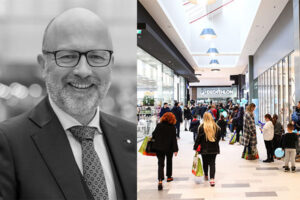By Sofia Trofimova
Structural changes mainly caused by the rise in online shopping, mean those of us managing retail assets need to incorporate new leisure, entertainment and food & beverage offerings to keep footfall and tenant sales buoyant. But the process of integrating these new concepts, without disrupting tenants or customers can be challenging. That said, retail property owners capable of communicating effectively with stakeholders and planning construction work from the outset will be on the front foot.
At IKEA Centres, we’ve had to become experts at upgrading our shopping centres while they remain fully operational. We are currently rolling out a major 2 billion EUR investment programme to upgrade our 14 MEGA branded Russian malls, and transform them into vibrant meeting places for the next generation. We are incorporating new F&B, cinemas, parks, open air cafes, kids play areas, flexible workspace, and more. But how are we doing this at our retail destinations that are visited by 250 million people every year?
Communicating with tenants has been vital. We have been transparent about our plans, explaining what they entail and how we can help address the impacts they could have on tenants. Our reconfiguration plans have been communicated months or even years in advance. This has encouraged open discussion, enabled tenants can ask questions and plan for any disruption.
We’ve also placed significant importance on getting the specific benefits of our upgrade programme across. We’re ensuring tenants and customers understand our vision and what it means. Everything we’re doing from adding parks, to cinemas to new restaurants, is about creating more reasons to visit our malls for the long term. Customers will have more opportunities for exciting new experiences, better family days out, and new places to relax and socialise. While tenants will benefit from a substantial uplift in footfall once the new concepts have been incorporated.
Our communications focus on how everything we’re doing is to create an even better, exciting space. But above all, they are engaging.
Large, colourful posters display images of what the renovated space will look like and be used for. Construction workers are depicted as cartoon style, friendly characters conveying positive messages about the work. At MEGA Kazan, our hoarding featured a popular installation where visitors could use their smart phones to see the finished works through augmented reality. At most MEGA malls we have actually spent more on marketing when refurbishment programmes are being undertaken, than when malls are fully operational.
Implementing measures to minimise disruption caused by construction work have also been key. For example, work is always carefully planned and discrete. It always goes on behind boards and never in open areas. Wherever possible it is carried out overnight. And if inconvenience is likely to be caused, for instance a lack of open food outlets or fewer parking spaces, we put alternative solutions in place. For example, when the food court at MEGA Kazan was being reconfigured, we incorporated temporary pop-up style new food options as a crowd pleasing alternative.
Interestingly, footfall at MEGA Kazan actually rose during refurbishment works. We think a large part of this was due to the excitement of the pop-up food concepts and the augmented reality hoarding, as well as construction work being carefully planned to minimise upheaval. This dispels the wide held belief that refurbishment works always have a negative impact on footfall.
Finally, don’t forget the local community. IKEA Centres is using local contractors to carry out big ideas that have been conceived at a global level. Local contractors immediately give a positive impression of our business and helps spread the word about what ultimately will be delivered in the local area. We are also provided with a set of professionals who know the local laws and restrictions, which helps ensure projects are delivered on time.
Reconfiguring retail property assets for the future is more important now than ever. This can seem like a daunting task, particularly when retail destinations need to remain fully operational. But retail property owners and asset managers able to combine effective stakeholder communication with carefully planned construction work have nothing to fear.
Sign up for our ACROSS Newsletter. Subscribe to ACROSS Magazine.





